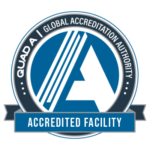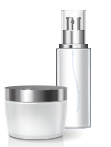Most women would agree that their breasts are a symbol of femininity and youthful vitality. For women with full, well-shaped breasts, they are often a source of self-confidence. It is no surprise, then, that many women who are unhappy with the appearance of their breasts seek breast augmentation surgery with saline or silicone breast implants. This procedure can be performed to improve the appearance of small, deflated-looking, or asymmetrical breasts.
If you can relate to these sentiments, you have come to the right place. At Accurate Aesthetics, Dr. Katherine Hein and her team are proud to provide breast augmentation procedures that help women in Boston, MetroWest, Wellesley, and Sudbury love the look of their breasts and enhance their quality of life.
Dr. Hein and her supportive staff are committed to providing beautiful yet natural-looking results from breast implant surgery, in a compassionate, comfortable environment.
Breast augmentation, technically known as augmentation mammoplasty, is a surgical procedure to enhance the size and shape of a woman’s breast for the following reasons:
Dr. Katherine Hein and her professional team at Accurate Aesthetics encourage you to schedule a personal consultation to establish whether you would benefit from breast implant surgery or perhaps another procedure, such as breast lift surgery or combination breast lift surgery with implants.
Before you decide to have surgery, think carefully about your expectations, and discuss them with Dr. Katherine Hein during your personal consultation.
Nonetheless, the decision to undergo breast enhancement should not be taken lightly, as it is a serious surgical procedure, and the results of the procedure are long lasting.
There are several important decisions that must be made during the breast augmentation process, including what type, size, shape, texture, and profile of breast implants to choose. To help you make an informed decision about which breast implants to choose the team at Accurate Aesthetics offers the following information about your breast implant options.
History Breast Implants
Breast implants have been used since the mid-1960s. Initially, the implants used were most often comprised of silicone gel. In the 1980s and ’90s, citizens started raising concerns about the safety of silicone breast implants, asserting that they cause autoimmune disease. In 1992, after much debate about whether silicone implants were safe (including the implementation of a voluntary moratorium on the distribution of silicone implants proposed by the FDA and agreed to by implant manufacturers), the FDA placed a moratorium on the use of silicone breast implants, except for women undergoing breast reconstruction surgery or for those who already had silicone implants and needed to replace them. Saline implants were still available on the market.
However, in 2006, after reviewing the findings of many clinical studies conducted to prove the safety of silicone breast implants and concluding that they do not cause autoimmune disease, the FDA lifted the ban on silicone breast implants, allowing them to be used in breast augmentation procedures for patients who are at least 22 years old. The FDA also approved the use of a newer style of silicone breast implants: highly cohesive, form-stable silicone implants, often referred to as “gummy bear” implants, due to the gummy-like consistency of the filling material.
Aside from the concern regarding a correlation between silicone implants and autoimmune disease, there was also a concern that silicone implants caused capsular contracture (a potentially painful condition in which scar tissue hardens around the implant, causing the breasts to feel hard). To prevent capsular contracture in patients with silicone implants, plastic surgeons started instructing these patients to massage the treatment area to keep any scar tissue as supple as possible. This worked well and led plastic surgeons to the realization that by placing the implants under the pectoralis (chest) muscle, the implants would in essence get massaged every time the arm was moved. Indeed, this did help minimize the incidence of capsular contracture, and is still a recommended treatment protocol. However, some patients’ anatomy or personal preference will lead Dr. Hein to recommend sub-glandular (under the breast) placement of the implants.
Saline vs. Silicone Breast Implant
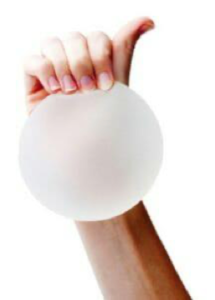
With postoperative massage, the chance of capsular contracture with first-generation silicone implants is greatly reduced. Also, the newest-generation silicone implants do not necessarily need to be placed beneath the chest muscle to reduce the risk of capsular contracture, thanks to their highly cohesive, form-stable filling material. In addition, silicone implants have been proven to be safe for use in breast augmentation surgery. However, some breast augmentation patients still opt for saline breast implants. Ultimately, the choice between saline and silicone implants is a personal one. To help you make this decision, here are some of the advantages and disadvantages of each type of implant.
Saline Implants
Saline implants are filled with a sterile saltwater solution that the body naturally absorbs in case of an implant leak or rupture. They are also slightly less expensive than silicone implants. Finally, because saline implants are filled after they are inserted, Dr. Hein can make small adjustments to the size of the implants during the operation.
However, saline implants are more prone to folding, rippling, or wrinkling within the implant pocket, and may be visible underneath the skin’s surface. For this reason, they are not necessarily the best option for women with thin skin or an insufficient amount of body fat to cover and support the implants properly.
Traditional Silicone Implants
Traditional silicone implants are filled with silicone gel. They are slightly more expensive than saline implants, but they more closely resemble the look and feel of natural breasts. They are also less prone to rippling within the implant pocket and to being visible underneath the skin’s surface.
The safety of silicone implants is shown by the fact that the body cannot absorb the filling material in case of a leak or rupture. Instead, the filling material stays intact either within or close to the implant pocket. This may make it more difficult to detect if there is a problem with the implant. For this reason, the FDA recommends that patients with silicone implants undergo a breast imaging exam every five years, starting the fifth year after the initial augmentation procedure.
Highly Cohesive Silicone Implants
The newest-generation implants are also silicone, but they are comprised of a more cohesive silicone filling material. Due to the gummy-like consistency of the filling material, these implants are often referred to by the public as “gummy bear” implants. Thanks to the advanced filling material, these implants are very unlikely to fold or move around within the implant pocket. Also, the filling material is form stable, meaning that it will maintain its form when the patient is reclining or even when cut in half.
These implants feel slightly firmer than the other options. However, they come in a variety of shapes and profiles, often making them a good option for women with very small breasts, those wanting a specific shape and some patients needing revision breast surgery or breast reconstruction for cancer.
What Are The Steps in Planning for Breast Augmentation Surgery
In your initial consultation, Dr. Hein will evaluate your health and explain which surgical techniques are most appropriate for you, based on the condition of your breasts and skin tone. If your breasts are sagging, she may also recommend a breast lift.
Be sure to discuss your expectations frankly with Dr. Hein. She will be equally frank with you, describing your alternatives and the risks and limitations of each. You will need to review and sign the manufacturers’ information brochure, so that you are fully informed. And be sure to tell us if you smoke, and if you’re taking any medications, vitamins, or other drugs.
We will also explain the type of anesthesia to be used, the type of facility where the surgery will be performed, and the costs involved. Because most insurance companies do not consider breast augmentation to be medically necessary, insurance carriers generally do not cover the cost of this procedure.
Our staff will give you instructions to prepare for surgery, including guidelines on eating and drinking, smoking, and taking or avoiding certain vitamins and medications.
While preparing, be sure to arrange for someone to drive you home after your surgery and to help you out for a few days, if needed.
Where Will Your Surgery Be Performed and is Anesthesia Needed?
Dr. Hein performs breast augmentation surgeries at her fully certified in-office
surgical suite. Your comfort and privacy is of paramount concern. Breast augmentation is usually performed with general anesthesia, so you’ll sleep through the entire operation. Another option is local anesthesia combined with a sedative to make you drowsy, so that you’ll be relaxed but awake and may feel some discomfort.
Dr. Hein utilizes a board-certified MD anesthesiologist or certified nurse anesthetist (CRNA) on each sedation case where sedation or general anesthesia is used.
What is the Surgical Process for Breast Augmentation

The method of inserting and positioning your implant will depend on your anatomy and Dr. Hein’s recommendation. The incision is usually made in the crease where the breast meets the chest. Every effort will be made to assure that the incision is placed so resulting scars will be as inconspicuous as possible.
Working through the incision, Dr. Hein will lift your breast tissue and skin to create a pocket, either directly behind the breast tissue or underneath your chest wall muscle (the pectoral muscle). The implants are then centered beneath your nipples.
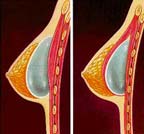 Putting the implants behind your chest muscle may reduce the potential for capsular contracture. Drainage tubes may be used for several days following the surgery. This placement may also interfere less with breast examination by mammogram than if the implant is placed directly behind the breast tissue. Placement behind the muscle, however, may be more painful for a few days after surgery than placement directly under the breast tissue. Additionally, some patients experience movement of the implant with pectoralis contraction (“animation deformity”).
Putting the implants behind your chest muscle may reduce the potential for capsular contracture. Drainage tubes may be used for several days following the surgery. This placement may also interfere less with breast examination by mammogram than if the implant is placed directly behind the breast tissue. Placement behind the muscle, however, may be more painful for a few days after surgery than placement directly under the breast tissue. Additionally, some patients experience movement of the implant with pectoralis contraction (“animation deformity”).
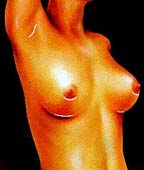 You’ll want to discuss the pros and cons of these alternatives with Dr. Hein before scheduling surgery to make sure you fully understand the implications of the procedure that she recommends for you.
You’ll want to discuss the pros and cons of these alternatives with Dr. Hein before scheduling surgery to make sure you fully understand the implications of the procedure that she recommends for you.
How Long Does Breast Augmentation Surgery Take?
The surgery usually takes one to two hours to complete.* Stitches are used to close the incisions, which may also be taped for greater support. A gauze bandage may be applied over your breasts to help with healing.
After surgery, breasts appear fuller and more natural in tone and contour. Scars will fade with time.*
What Are the Risks of Breast Augmentation Surgery
All surgery carries some uncertainty and risk. Breast augmentation is relatively straightforward. But as with any operation, there are risks associated with surgery and specific complications associated with this procedure.
The most common problem, capsular contracture, occurs if the scar or capsule around the implant begins to tighten. This squeezing of the soft implant can cause the breast to feel hard. Capsular contracture can be treated in several ways and sometimes requires either removal or “scoring” of the scar tissue or perhaps removal or replacement of the implant.
As with any surgical procedure, excessive bleeding following the operation may cause some swelling and pain. If excessive bleeding continues, another operation may be needed to control the bleeding and remove the accumulated blood.
A small percentage of women develop an infection around an implant. This may occur at any time but is most often seen within a week after surgery. In some cases, the implant may need to be removed for several months until the infection clears. A new implant can then be inserted.*
Some women report that their nipples become oversensitive, under sensitive, or even numb. You may also notice small patches of numbness near your incisions. These symptoms usually disappear with time but may be permanent in some patients.*
There is no evidence that breast implants will affect fertility, pregnancy, or your ability to nurse. If, however, you have nursed a baby within the year before augmentation, you may produce milk for a few days after surgery. This may cause some discomfort but can be treated with medication prescribed by your doctor.
Occasionally, breast implants may break or leak. Rupture can occur as a result of injury or even from the normal compression and movement of your breast and implant, causing the human-made shell to leak. If a saline-filled implant breaks, the implant will deflate in a few hours and the salt water will be harmlessly absorbed by the body.
If a break occurs in a gel-filled implant, however, one of two things may occur. If the shell breaks but the scar capsule around the implant does not, you may not detect any change. If the scar also breaks or tears, especially following extreme pressure, silicone gel may move into surrounding tissue. The gel may collect in the breast and cause a new scar to form around it. Rarely, it may migrate to another area of the body. There may be a change in the shape or firmness of the breast. Both types of breaks may require a second operation and replacement of the leaking implant. In some cases, it may not be possible to remove all of the silicone gel in the breast tissue if a rupture should occur.
A few women with breast implants have reported symptoms similar to diseases of the immune system, such as scleroderma and other arthritis-like conditions. These symptoms may include joint pain or swelling, fever, fatigue, or breast pain. Research has found no clear link between silicone breast implants and the symptoms of what doctors refer to as “connective-tissue disorders” or “breast implant illness.”
While there is no evidence that breast implants cause breast cancer, they may change the way mammography is done to detect cancer. When you request a routine mammogram, be sure to go to a radiology center where technicians are experienced in the special techniques required to get a reliable x-ray of a breast with an implant. Additional views will be required. Ultrasound examinations may be of benefit in some women with implants to detect breast lumps or to evaluate the implant. One rare type of cancer may be associated with breast implants. Please ask Dr. Hein for more information about this.
While the majority of women do not experience any complications, you should discuss each of them with Dr. Hein to make sure you understand the risks and consequences of breast augmentation.
What is The Recovery Process for Breast Augmentation Surgery?
You are likely to feel tired and sore for a few days following your surgery, but you’ll be up and around in twenty-four to forty-eight hours. Most of your discomfort can be controlled by medication prescribed by your doctor.*
Within several days, the gauze dressings, if you have them, will be removed, and you may be given a surgical bra. You should wear it as directed. You may also experience a burning sensation in your nipples for about two weeks, but this will subside as bruising fades.*
Your stitches will come out in ten to fourteen days, but the swelling in your breasts may take four to six weeks to disappear. You should be able to return to work within a few days, depending on the level of activity required for your job.*
Download Post-Op Instructions
Getting Back to Normal
Carefully follow Dr. Hein’s advice on when to begin exercises and normal activities. Your breasts will probably be sensitive to direct stimulation for two to three weeks, so you should avoid much physical contact. After that, breast contact is fine once your breasts are no longer sore, usually three to four weeks after surgery.*
Your scars will be firm and pink for at least six weeks. Then they may remain the same size for several months, or even appear to widen. After several months, your scars will begin to fade, although they will never disappear completely.*
Routine mammograms should be continued after breast augmentation for women who are in the appropriate age group, although the mammographic technician should use a special technique to assure that you get a reliable reading, as discussed earlier. If you have silicone implants, the FDA recommends an MRI every few years to look for leakage. Dr. Hein will review this with you at your annual visit.
For many women, the result of breast augmentation can be satisfying, even exhilarating, as they learn to appreciate their fuller appearance.
Regular examination by your plastic surgeon and routine mammograms for those in the appropriate age groups at prescribed intervals will help assure that any complications, if they occur, can be detected early, and treated. Dr. Hein likes to see all her breast implant patients once a year.
Your decision to have breast augmentation is a highly personal one that not everyone will understand. The important thing is how you feel about it. If you’ve met your goals, then your surgery is a success.
When you select Accurate Aesthetics Plastic Surgery for your breast augmentation procedure you can be reassured of a close personal relationship with Dr. Hein and her professional staff.
*Results may vary and are not guaranteed. Consult with the medical professionals at Accurate Aesthetics Plastic Surgery to see if you are a candidate.
 Breast augmentation can enhance your appearance and your self-confidence, but it won’t necessarily change your looks to match your ideal or cause other people to treat you differently.Generally speaking, the best candidates for breast augmentation are women who are looking for improvement, not perfection, in the way they look. Also, women should be in good overall health, both mentally and physically and have made the choice to pursue breast augmentation surgery of their own volition.
Breast augmentation can enhance your appearance and your self-confidence, but it won’t necessarily change your looks to match your ideal or cause other people to treat you differently.Generally speaking, the best candidates for breast augmentation are women who are looking for improvement, not perfection, in the way they look. Also, women should be in good overall health, both mentally and physically and have made the choice to pursue breast augmentation surgery of their own volition. Undergoing breast augmentation surgery in Boston under the care of Dr. Katherine Hein can be a positive experience for patients who desire to augment their breast size. Patients who had the procedure often remark that they love their new figure and have greater self-confidence.
Undergoing breast augmentation surgery in Boston under the care of Dr. Katherine Hein can be a positive experience for patients who desire to augment their breast size. Patients who had the procedure often remark that they love their new figure and have greater self-confidence.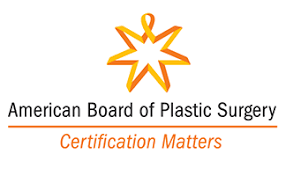 Dr. Katherine Hein is among the top cosmetic surgeons in the Boston, MetroWest, Wellesley, and Sudbury area. Dr. Hein is certified by the American Board of Plastic and Reconstructive Surgery and has specialized in breast and cosmetic surgery since 1999. She has performed thousands of cosmetic and reconstructive surgeries.
Dr. Katherine Hein is among the top cosmetic surgeons in the Boston, MetroWest, Wellesley, and Sudbury area. Dr. Hein is certified by the American Board of Plastic and Reconstructive Surgery and has specialized in breast and cosmetic surgery since 1999. She has performed thousands of cosmetic and reconstructive surgeries.
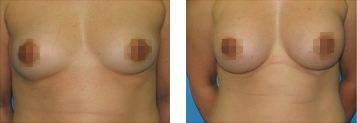
 With postoperative massage, the chance of capsular contracture with first-generation silicone implants is greatly reduced. Also, the newest-generation silicone implants do not necessarily need to be placed beneath the chest muscle to reduce the risk of capsular contracture, thanks to their highly cohesive, form-stable filling material. In addition, silicone implants have been proven to be safe for use in breast augmentation surgery. However, some breast augmentation patients still opt for saline breast implants. Ultimately, the choice between saline and silicone implants is a personal one. To help you make this decision, here are some of the advantages and disadvantages of each type of implant.
With postoperative massage, the chance of capsular contracture with first-generation silicone implants is greatly reduced. Also, the newest-generation silicone implants do not necessarily need to be placed beneath the chest muscle to reduce the risk of capsular contracture, thanks to their highly cohesive, form-stable filling material. In addition, silicone implants have been proven to be safe for use in breast augmentation surgery. However, some breast augmentation patients still opt for saline breast implants. Ultimately, the choice between saline and silicone implants is a personal one. To help you make this decision, here are some of the advantages and disadvantages of each type of implant.
 The method of inserting and positioning your implant will depend on your anatomy and Dr. Hein’s recommendation. The incision is usually made in the crease where the breast meets the chest. Every effort will be made to assure that the incision is placed so resulting scars will be as inconspicuous as possible.
The method of inserting and positioning your implant will depend on your anatomy and Dr. Hein’s recommendation. The incision is usually made in the crease where the breast meets the chest. Every effort will be made to assure that the incision is placed so resulting scars will be as inconspicuous as possible.
 Putting the implants behind your chest muscle may reduce the potential for capsular contracture. Drainage tubes may be used for several days following the surgery. This placement may also interfere less with breast examination by mammogram than if the implant is placed directly behind the breast tissue. Placement behind the muscle, however, may be more painful for a few days after surgery than placement directly under the breast tissue. Additionally, some patients experience movement of the implant with pectoralis contraction (“animation deformity”).
Putting the implants behind your chest muscle may reduce the potential for capsular contracture. Drainage tubes may be used for several days following the surgery. This placement may also interfere less with breast examination by mammogram than if the implant is placed directly behind the breast tissue. Placement behind the muscle, however, may be more painful for a few days after surgery than placement directly under the breast tissue. Additionally, some patients experience movement of the implant with pectoralis contraction (“animation deformity”). You’ll want to discuss the pros and cons of these alternatives with Dr. Hein before scheduling surgery to make sure you fully understand the implications of the procedure that she recommends for you.
You’ll want to discuss the pros and cons of these alternatives with Dr. Hein before scheduling surgery to make sure you fully understand the implications of the procedure that she recommends for you.